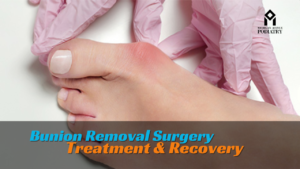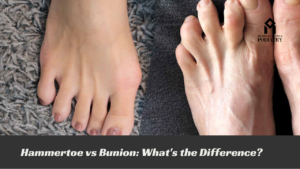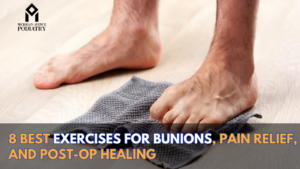High heels have long been a staple in many women’s wardrobes, often associated with style, elegance, and confidence. However, alongside their fashion appeal, high heels have also been linked to various foot problems, including bunions. In this comprehensive blog post, we’ll delve into the relationship between high heels and bunions, explore how wearing high heels can contribute to bunion formation, and discuss the role of a podiatrist in addressing and managing bunions effectively.
Bunions Causes: Understanding What is Bunions
Before we delve into the impact of high heels on bunions, let’s first understand what bunions are. Bunions, medically known as hallux valgus, are bony protrusions that form at the base of the big toe joint. They often develop gradually over time, causing the big toe to deviate towards the other toes and resulting in a visible bump on the side of the foot.
How High Heels Contribute to Bunions
While bunions can have various causes, the structure and design of high heels can exacerbate their development and progression. Here’s how:
- Increased Pressure: High heels force the body’s weight to be concentrated on the front of the foot, particularly on the metatarsophalangeal (MTP) joint of the big toe. This increased pressure can cause the bones and soft tissues around the joint to become misaligned, leading to bunion formation.
- Toe Crowding: Most high heels feature a narrow and pointed toe box, which restricts the natural movement of the toes and forces them into a cramped position. Over time, this toe crowding can exacerbate the misalignment of the big toe joint and contribute to bunion development.
- Altered Biomechanics: Wearing high heels alters the biomechanics of the feet, affecting how weight is distributed and absorbed with each step. This altered gait pattern can place excessive stress on the MTP joint, leading to inflammation, pain, and eventual bunion formation.
- Habitual Wearing: Continuous and prolonged wearing of high heels can further exacerbate bunion development, especially if worn for extended periods without adequate rest or supportive footwear alternatives.
The Role of a Podiatrist
If you’re experiencing symptoms of bunions or are concerned about their development, seeking guidance from a podiatrist is essential. Here’s how a podiatrist can help:
- Accurate Diagnosis: A podiatrist can conduct a comprehensive evaluation of your foot structure, gait, and symptoms to accurately diagnose bunions and assess their severity.
- Customized Treatment Plan: Based on your individual needs and the extent of your bunion, a podiatrist can develop a personalized treatment plan tailored to address your specific concerns. This may include conservative measures such as wearing supportive footwear, orthotic inserts, or padding to alleviate pressure and pain.
- Footwear Recommendations: A podiatrist can provide recommendations for footwear alternatives that offer better support, stability, and comfort, reducing the risk of exacerbating bunions.
- Surgical Intervention: In cases where conservative treatments are ineffective or when bunions cause significant pain and functional limitations, a podiatrist may recommend surgical intervention to correct the deformity and realign the affected joint.
Preventive Measures
While high heels may be unavoidable for some occasions, there are steps you can take to reduce the risk of bunion formation and minimize discomfort:
- Limit the duration and frequency of high heel wear, opting for supportive footwear with lower heel heights whenever possible.
- Choose shoes with a wide toe box to allow for natural toe splay and minimize pressure on the MTP joint.
- Incorporate stretching exercises and foot massages into your daily routine to improve flexibility and reduce tension in the feet.
In Conclusion
While high heels can undoubtedly elevate your style, it’s essential to be mindful of their potential impact on foot health, particularly when it comes to bunions. By understanding the relationship between high heels and bunions and seeking guidance from a podiatrist, you can take proactive steps to protect your feet and mitigate the risk of bunion formation. Remember, prioritizing comfort and support in your footwear choices is key to maintaining healthy and happy feet for years to come.




